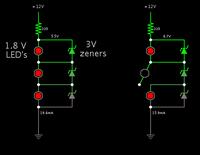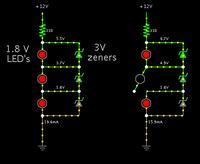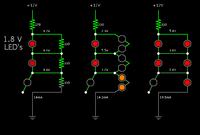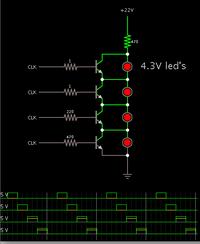thinkanish
Junior Member level 2

Hi,
friends, I am stuck in an issue here...
Problem:
Need to Identify the faulty LED in a array of LEDs connected in serial fashion.
Solution tried:
A Resistance is also added in series along with the LEDs. Then all LEDs except one is bypassed (shorted) and the voltage on the resistance is measured. I thought this might provide better results. But on the contrary, while shorting and testing, when the last LED is tested, it blows out due to high current
Any one got some idea how to do this?
Thanks.
friends, I am stuck in an issue here...
Problem:
Need to Identify the faulty LED in a array of LEDs connected in serial fashion.
Solution tried:
A Resistance is also added in series along with the LEDs. Then all LEDs except one is bypassed (shorted) and the voltage on the resistance is measured. I thought this might provide better results. But on the contrary, while shorting and testing, when the last LED is tested, it blows out due to high current
Any one got some idea how to do this?
Thanks.





